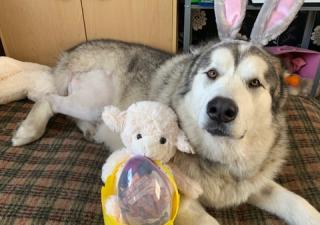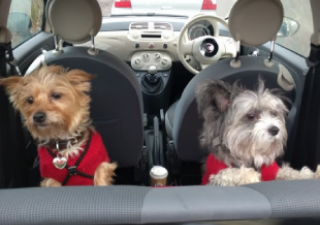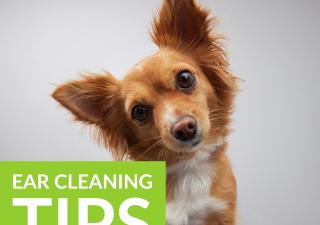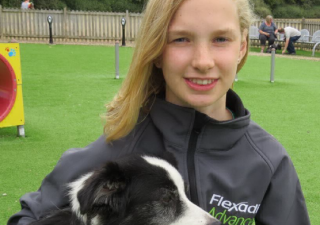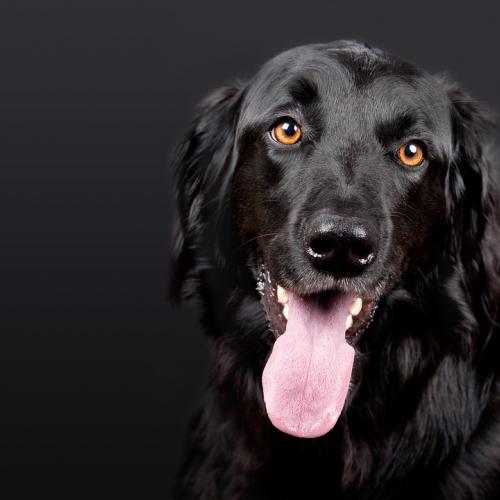
How can I teach my dog not to be fearful of fireworks?
Back to overviewWe can teach dogs not to be fearful of fireworks by exposing them to recordings of the sounds in a way that helps them learn they are not harmful. This process is called desensitisation and counter conditioning.
Desensitisation is a little like habituation for dogs that are already scared of something. It is the process by which they get used to it and realise it’s not going to harm them. Counter conditioning is where the dog starts to link the scary thing with something pleasurable, such as food or play, and so starts to feel happy around it. Desensitisation does stop a dog being fearful but is prone to breaking down, such as if they hear a sudden very scary or loud firework. This is why we tend to follow it with counter conditioning, which is much less likely to be undone by a bad experience. However some dogs can’t cope with eating or playing around the sound of fireworks at first, even if they are very quiet. This is why we tend to carry out desensitisation first.
This training can be very effective for helping dogs overcome fear of fireworks or other banging noises. However, when carrying out the training we need to keep in mind that the emotions linked to fear are unpleasant in themselves and so if a dog is fearful during training this will block their ability to learn there is nothing to be worried about. This is why it is not a good idea to use the type of ‘flooding’ techniques, in which the dog is exposed to the thing that is scaring them at its full intensity until they stop panicking, as sometimes suggested. This is very risky and will make many dogs more rather than less scared. It also compromises their welfare. We therefore help the dog feel less worried by the noises by playing them very quietly at first and gradually increasing how loud they are until this matches the volume of fireworks in the real world.
When is best to carry out the training?
You will need to control your dog’s exposure to fireworks during this training so you can ensure the volume of them is increased gradually. It is therefore best to do this when there are unlikely to be any real fireworks, or these may set you back.
It is also important to make the training as realistic as possible. It therefore helps to ensure at least part of the training is carried out when the evenings are dark and days are short. The ideal time in the UK, depending on where you live, is usually late winter or early spring. How to help your dog cope with any real fireworks before you can start training is discussed in “My dog is afraid of fireworks - what should I do?”
Can I treat my dog at home?
It is possible to carry out a desensitisation and counter conditioning plan at home using sound recordings that can be found on the Dogs Trust website. However, doing it incorrectly can often make your dog’s fear worse. It is therefore advisable to seek help from a Clinical Animal Behaviourist before starting. They can then take into account the severity of your dog’s phobia, any other problem behaviour that may impact on the training and your personal circumstances when developing a training plan.
Stephanie Hedges BSc (Hons) CCAB
Canine Behaviour Counsellor
Full member of the Association of Pet Behaviour Counsellors
ASAB Certified Clinical Animal Behaviourist (CCAB)
Animal Behaviour & Training Council (ABTC) Registered Clinical Animal Behaviourist
Tips & Tricks
- Easter is a wonderful time of year with so many chocolate Easter eggs in abundance, but make sure you do not let your pet near them.
- With Brexit deal still in negotiation and a possibility of a ‘no deal’ scenario, there are no concrete answers just yet – but to help you become more informed, here is our Q&A on what we can find so far.
- Build-up of wax and debris in your pet's ear canals can lead to discomfort and irritation. Cleaning your pet’s ears can have a lot of benefits and here are some tips to get you started!
- We had a great time catching up with Mariann Bayliss, our sponsored agility handler last week. We met her competing dog, Ila, and her 5 month old puppy Coral.

